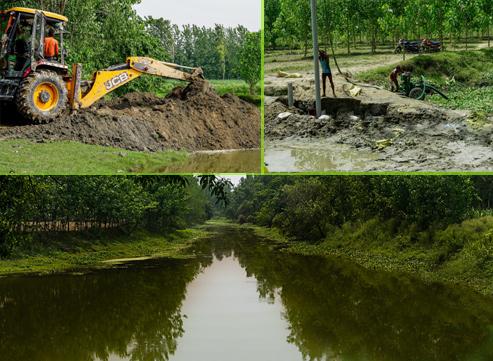River Rejuvenation Projects in India: A Path to Restoring Vital Lifelines

India’s rivers are not just geographical features; they are the lifelines of the nation, nurturing millions of lives, supporting agriculture, and sustaining ecosystems. However, centuries of industrialization, urbanization, and neglect have led to severe pollution and degradation of these crucial water bodies. To combat this, India has embarked on ambitious river rejuvenation projects aimed at restoring the health of its rivers and ensuring their sustainability for future generations.
The Urgency of River Rejuvenation
Rivers like the Ganges, Yamuna, and Godavari have long been revered in Indian culture and are vital to its economy and ecology. Yet, pollution from untreated sewage, industrial effluents, and religious practices, combined with over-extraction of water, has severely impacted their quality. The challenge is to reverse this damage and revive these rivers to their former glory.
Key Initiatives and Strategies
1. National Mission for Clean Ganga (NMCG)
One of the most notable river rejuvenation efforts is the National Mission for Clean Ganga (NMCG), launched by the Indian government. This initiative aims to reduce pollution in the Ganges River through comprehensive measures such as setting up sewage treatment plants, promoting the use of cleaner technologies, and implementing strict regulations on industrial discharges. The NMCG also focuses on creating public awareness and involving local communities in conservation efforts.
2. Yamuna Action Plan
The Yamuna Action Plan addresses the urgent need to clean the Yamuna River, which has faced severe pollution problems. This plan emphasizes the construction of sewage treatment facilities, improving waste management practices, and reducing the input of pollutants into the river. It also includes efforts to restore natural habitats along the riverbanks and enhance overall river management.
3. Godavari River Basin Management
The Godavari, the second-longest river in India, is also a focus of rejuvenation projects. The Godavari River Basin Management Plan aims to tackle issues such as pollution control, water conservation, and sustainable agricultural practices. The project emphasizes the need for integrated river basin management to address water quality and quantity challenges comprehensively.
Community Engagement and Sustainable Practices
Successful river rejuvenation requires more than just government initiatives; it necessitates active community involvement. Many projects now include local communities in their planning and execution phases. Efforts such as river clean-up drives, community-based monitoring programs, and educational campaigns help foster a sense of ownership and responsibility among citizens.
Sustainable practices are also crucial. Projects are increasingly focusing on restoring natural river ecosystems, which can help filter pollutants and support biodiversity. Riparian buffer zones, which involve planting vegetation along riverbanks, play a significant role in reducing runoff and preventing erosion.
The Path Forward
While significant progress has been made, the journey of river rejuvenation in India is ongoing. The success of these projects depends on continued commitment from both the government and the public. Integrating technological innovations, such as real-time monitoring systems and advanced treatment technologies, with traditional conservation methods offers a promising path forward.
As India moves towards revitalizing its rivers, the overarching goal is to create a harmonious balance between development and environmental stewardship. By investing in these rejuvenation projects and fostering a culture of sustainability, India can ensure that its rivers continue to thrive and serve as vital resources for generations to come.









Comments